
Fire Emblem: Three Houses Review
Review Update (October 17, 2019)
An addendum to this review has been posted after the release of update 1.02. This update introduced additions that alleviated some of my original criticisms of the game, namely its difficulty thanks to the addition of a Maddening difficulty mode. You can read the full addendum to the review here.
Original Review
I have put more than 100 hours into Fire Emblem: Three Houses. I have beaten the game twice on two different routes, and I am currently making my way through my third playthrough. It's clear that Three Houses is incredibly ambitious, but its branching story structure is also a bit of a double-edged sword. As soon as I finished my first run of the game, I immediately started up a second playthrough, because in a way I was 'unsatisfied' with that first conclusion on its own. I don't mean this solely as a criticism; the game made it very clear that there were plot and character elements that were never shown or explored -- not because it was withheld from me, but instead because of a choice I made as I progressed through the game.
It's quite rewarding to see different sides of the conflict and to get to know largely different sets of characters in subsequent playthroughs. While I have not exhausted every potential narrative branch, I feel at this point that I have a fair grasp on the storyline and lore that Three Houses has to offer, but, it is clear there is still plenty I have yet to see.
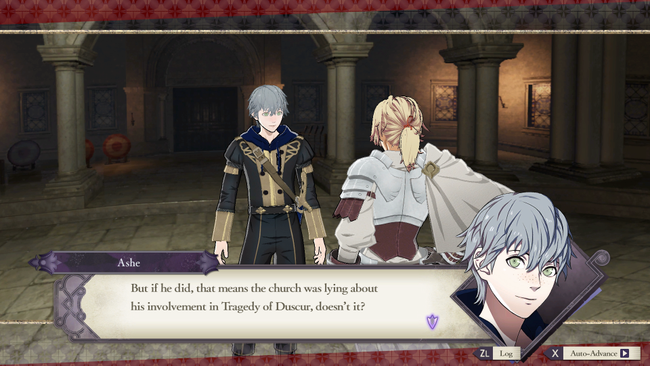
As I made my way through Fire Emblem: Three Houses, I found myself unexpectedly invested in learning more about the world of Fodlan and the histories of its various kingdoms and conflicts -- a collection of information that ends up being more than what one single route could possibly tell me. In order to get that holistic viewpoint of the world presented, it's essential to do more than one playthrough. I still have lingering questions about certain characters, world elements, and plot points that might get answered in other routes, or it's possible they are left open-ended as-is. I won't know until I check out the routes I ignored before. It's also worth mentioning that despite the name of the game, there are actually more than three possible endings, though I'll not spoil it further than that.
Altogether, It's been a long while since I've been this interested in learning out more about a Fire Emblem world setting; not since the Tellius games more than a decade ago.
Fire Emblem: Three Houses is quite a multi-faceted RPG, and there are many elements to discuss about it. Out of everything that the game has to offer, the one thing that especially impressed me was the worldbuilding, and specifically how Support conversations help to fully realize the world and inhabitants of Fodlan.
For those who love the series' Support conversations, know that Fire Emblem: Three Houses has many. Any student from one of the three classes can support with any other member of their class, a selection of students from other classes, as well as a variety of professors, knights, and some other characters that come into the fold. There is plenty of character interaction to be found.
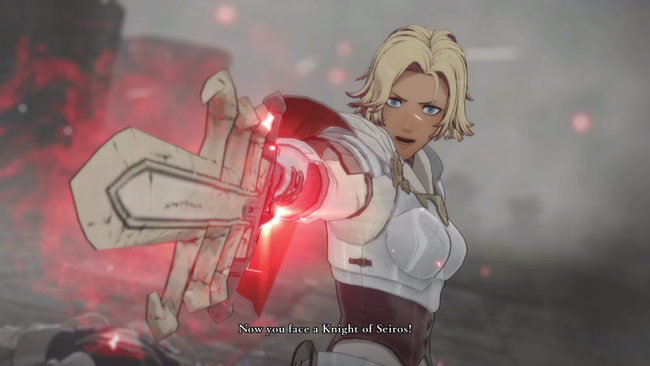
Unlike Awakening and Fates, where a majority of Support conversations felt largely like a pair-up matchmaking simulator, Support conversations in Three Houses feel more varied. There are an incredible amount of conversations between units, so you get a little bit of everything: for those who got into Fire Emblem because of the romantic focus of the 3DS games, know that several Supports do lead to flirty romance, though not with the same regularity as recent games. Other conversations are largely amusing and wacky hijinks. However, the conversations I became most attached to were the ones that expanded upon the character and world histories that may not be immediately addressed in the main game storyline.
These sorts of Supports somewhat remind me of Fire Emblem: The Blazing Sword, known as simply Fire Emblem in the West, where a significant portion of the world-building was tucked away within these optional conversations between your army of units. As a small example for Three Houses, by learning about the histories of the knights Catherine and Shamir, you learn more about the places they came from, the history of the church, and how it may have affected other characters at the monastery in your group. Supports with characters like Petra reveal more about nations and events outside of Fodlan, such as the Dagda and Brigid War and its effects on those characters. Supports with Felix, Ingrid, Ashe, and Dedue reveal details on other snippets of game history, such as the Tragedy of Duscur and how it has affected these characters.
I've always been appreciative when a game introduces these sorts of historical elements to its world that may not be immediately relevant to the direct plot of the game. It makes the world we are seeing feel fuller and more alive, more real, a place in which important events unfold whether or not the player is present to witness them. It emphasizes the idea that the story we experience first-hand alongside our characters as only one small part of a larger world.
While our knowledge of the world is not taught is exclusively through these conversations, it's definitely where much of it can be found. Despite that these depictions of key events and characters are sometimes discussed in a way that we, the players, never actually get to see for ourselves, learning about these elements becomes an integral component to understanding who these characters are, and are still vital to establishing the setting of this game.
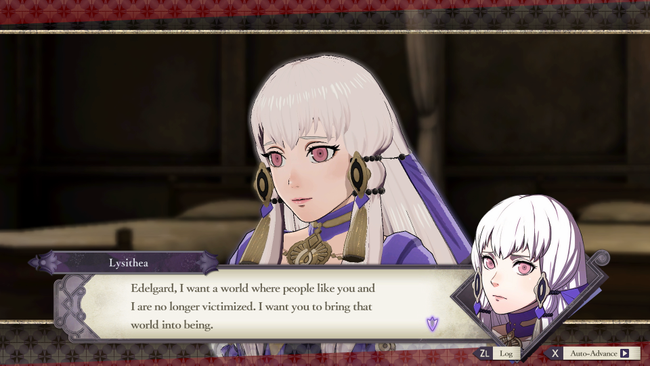
The lore built around the world of Fodlan is one of Three House's most impressive elements, which is why I wanted to touch on it at the start of this review. It's rich and compelling - and the main reason I continue to play through the game for the third time - and I haven't seen all there is to see yet.
Characters often act as our lore tellers, where their personal experiences tell us about the world they live in. While many of the characters in Three Houses can be hastily summarized summed up by a single personality trait (and in fact are introduced that way), that alone is an inadequate way to fully describe them. In my experience so far, just about each character has a thorough personal history that has brought them to Garreg Mach, and the game's Support conversations do much to reveal these histories to the player. These also shine light on why certain characters act the way they do. One specific example that I found touching was the circumstance surrounding Lysithea. Without getting into spoilers, a few Support conversations even seem to house major character revelations.
Additionally, how Fire Emblem: Three Houses gives you nearly all of your playable characters from the game's onset helps to make each feel valuable and distinct, rather than having the player meet characters in sequence during the plotline as in other Fire Emblem games.
For as much as I enjoyed the world and character building in Fire Emblem: Three Houses, I found myself just a tad disappointed in the actual storyline that takes place - the sequence of events that we see - at least with what I've seen so far. There is a fairly interesting plot twist the takes place roughly around the midpoint of the game, which I found admittedly well-done and defied my expectations, but I came up slightly unsatisfied with how the story progressed past that point. That's one reason I want to keep playing, to see if other route storylines capture my interest more than the first few I went through.
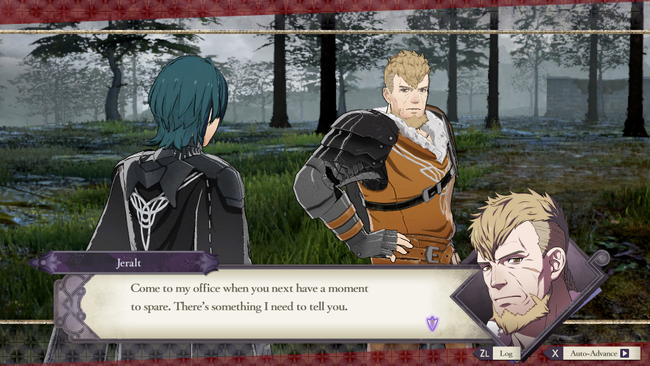
The core combat gameplay found in Fire Emblem: Three Houses certainly puts its own flourishes on the series' style, but if you've played a Fire Emblem game before, you already generally know what to expect on the battlefield. You'll take your chosen team of fighters onto the tactical grid, and work your way to take out the enemy while keeping your own team alive. Some new components like Battalions and Monster enemies do give Three Houses its own flavor in some respects, but at its core, the usual tactical trappings are all here ... mostly.
For all I was impressed with the world and lore of Fire Emblem: Three Houses, I do have one major gameplay criticism that I couldn't quite fully overcome. The game is simply far too easy. That is, Fire Emblem: Three Houses felt like one of the most painless games in the series, and I played on Hard Mode. For some players, or for players not accustomed to strategy RPGs, this might be something they are incredibly glad to hear. People who come to Three Houses primarily for the storyline and character interactions might breathe a sigh of relief knowing the gameplay won't be a hurdle to those elements. But I, as someone who really came to love Fire Emblem for the tactics, came away slightly disappointed just how much of the game I breezed through.
It wasn't a total breeze, to be fair. There were a couple of maps near the end of the game where the challenge finally ratcheted up a notch, which was exciting. However, not only was a little-too-late, but I still had to handicap myself a bit by using largely weak iron weapons, even though I had amassed plenty of stronger ones and plenty of money by then. I never messed too much with Battalions, and I never bother forging weapons at the shop because I felt like I never needed to. Nintendo has revealed plans to release a free Lunatic Mode DLC sometime after launch, which sounds like it will be a nice option to have, although I can't comment too much on its inclusion at this point.
One reason the game feels so lenient is the inclusion of the Divine Pulse system, which allows you to 'rewind' actions in battles a limited number of times. I'll admit, it's nice that you don't have to reset from the start of a map if you are met with an unlucky Crit. However, the game ultimately gifts you with more than a dozen of these Redos for every map, which plainly begins to remove some of the consequences to tactical decision making. You can afford to be extremely reckless at times, knowing you have plenty of mulligans sitting in your pocket. A few do-overs is fine, but having more than 12 redos per map seems a bit more-than-generous.
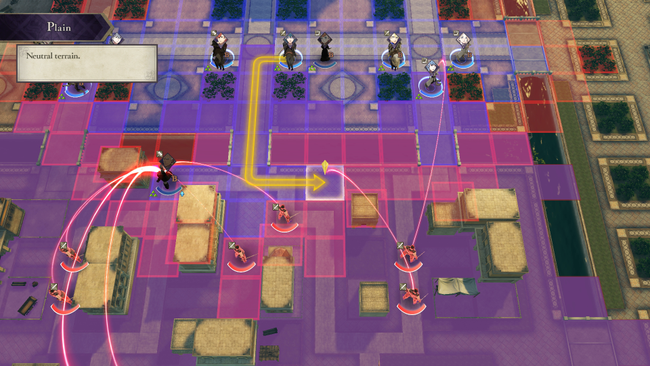
Another new element to Three Houses is that the game will show the player which enemy is targeting which of your units, and exactly how much damage they will do on their next turn if they land their hits. When you move a unit into enemy range, the game will even tell you if they will be targeted or not, before you even finalize the move. While this prediction is not absolutely perfect, because it doesn't take into account if all units will be able to reach their target as the enemy phase progresses due to units blocking paths, it is still a system that can be readily exploited by the player in circumstances. The combination of these predictions and the ability to rewind take some of the strategies out of the game and allow cheaper tactics instead.
I'm at odds with this. On one hand, lenient difficulty means you don't have to fret too much when you are building your units at the monastery. The game is flexible enough that even if you do not manage your time well, you can probably make it through without too much hassle. But it also makes the time spent training and composing your units feel less valuable, because the game will rarely put your efforts to the test. You can probably Auto-instruct your way through most of the game, and end up fine.
I haven't gotten to talking about the overall structure of the game yet, which is a little different from past entries. As you already know if you've seen any pre-release information at all, you'll be spending a lot of time at the monastery in between the main storyline missions. Here you'll be bonding with your units, preparing for battle with battalions and weaponry, and teaching your students the skills they'll use in combat.
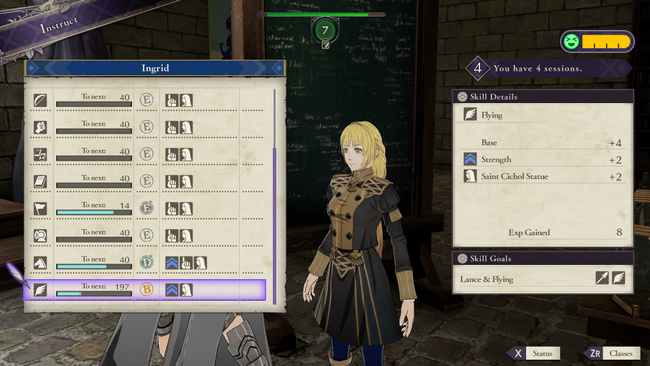
This isn't really too different from what you would do in previous games like Fire Emblem: Path of Radiance in between battles at the base. You'll see a few character conversations, do some equipment management, and check out some new supports. The most obvious new addition here is that you'll have to continue working towards your class Skill goals as you shape them into the units you want them to be.
A part of me wishes the game was a bit snappier here. But I can't deny, it is moderately rewarding when you see the time you put into building your units pay off on the battlefield - seeing your units benefit and grow from the direction you've given them in class. While each student has a few Skills they are inherently adept at, they are still malleable enough that you can shape their ultimate utility on the battlefield fairly flexibly. In one of my playthroughs, I had Ferdinand become a reliable Faith-wielding Holy Knight to tank the front lines while providing some healing support upfront. During my second go-round, he became more a glass cannon Axe-wielding Wyvern Lord able to traverse large portions of the various maps with ease.
In brief, the teaching elements to Fire Emblem: Threes Houses do take a considerable amount of extra time, but I found it eventually becomes routine enough that it never bothered me to a tremendous extent. But I also feel the general lack of challenge to the game as a whole makes just about everything feel somewhat less satisfying than it could be. It almost feels like the game was afraid to let people make poor decisions when building their units, so it goes easy on them such that it's very hard to 'teach your students poorly'. Hopefully the Lunatic mode DLC will appeal to people like me who really want to test their mettle when it comes to constructing an army.
Another slightly disappointing component to Fire Emblem: Three Houses is its general performance overall. Sometimes loading screens entering the monastery can be around 30 seconds or longer, and sometimes dashing through Garreg Mach and lead to framerate slowdown, even when docked. It's also not especially a visually impressive game, in or outside of battle, though Fire Emblem has never been one to boast great fidelity in its visuals, at least in its 3D iterations.
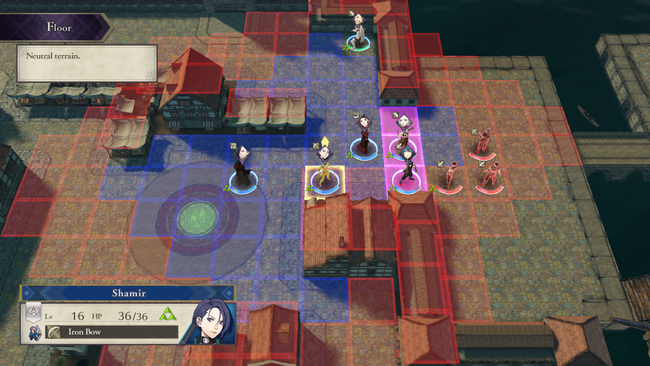
The best map designs and objectives seem to be often found in the game's Paralogue battles. These are extra maps that can pop up in between primary story missions depending on which route you are on, or which characters you've recruited into your group. These missions also bolster the worldbuilding of the game, with character storylines coming to the forefront briefly. However, some of these more interesting maps are partially betrayed by the game's general ease. Objectives where you have to defend certain positions on the map or certain NPCs become somewhat of an afterthought, because the game isn't challenging enough where you even really have to think about how you are going to achieve those objectives.
The game does have a turbo feature so you can see battle animations while fast-forwarding through them, but I wish it was implemented a little bit better. You hold down the A button to have everything on the map move at high speed, but the game will slow down any time a unit gains EXP, which is often. So you have to repeatedly click and hold to maintain the turbo speed. A small adjustment where you can keep holding down the button would go a long way. Of course, you can also turn off battle animations entirely.
Last but not least, I wanted to mention that the English localization and voice acting on display is largely well done here. While it might not be as solidly impressive as the localization work done in Fire Emblem Echoes: Shadows of Valentia, it seems like Nintendo went the extra mile in the first worldwide simultaneous launch for the series. I'm not fond of every character voice performance, with some leaning perhaps too far into a silly mode of speech. But with so many characters, it was probably inevitable that I'd find some voices wouldn't mesh well with the rest. And for those who would prefer it, Japanese voices are available right from the start menu.
Despite some of my misgivings with the challenge available or the storyline itself, I still come away quite fond of Fire Emblem: Three Houses largely due to is characters and world. As I write this review, I am eager to return to the game to finish up the remaining routes as soon as I can get around to them.